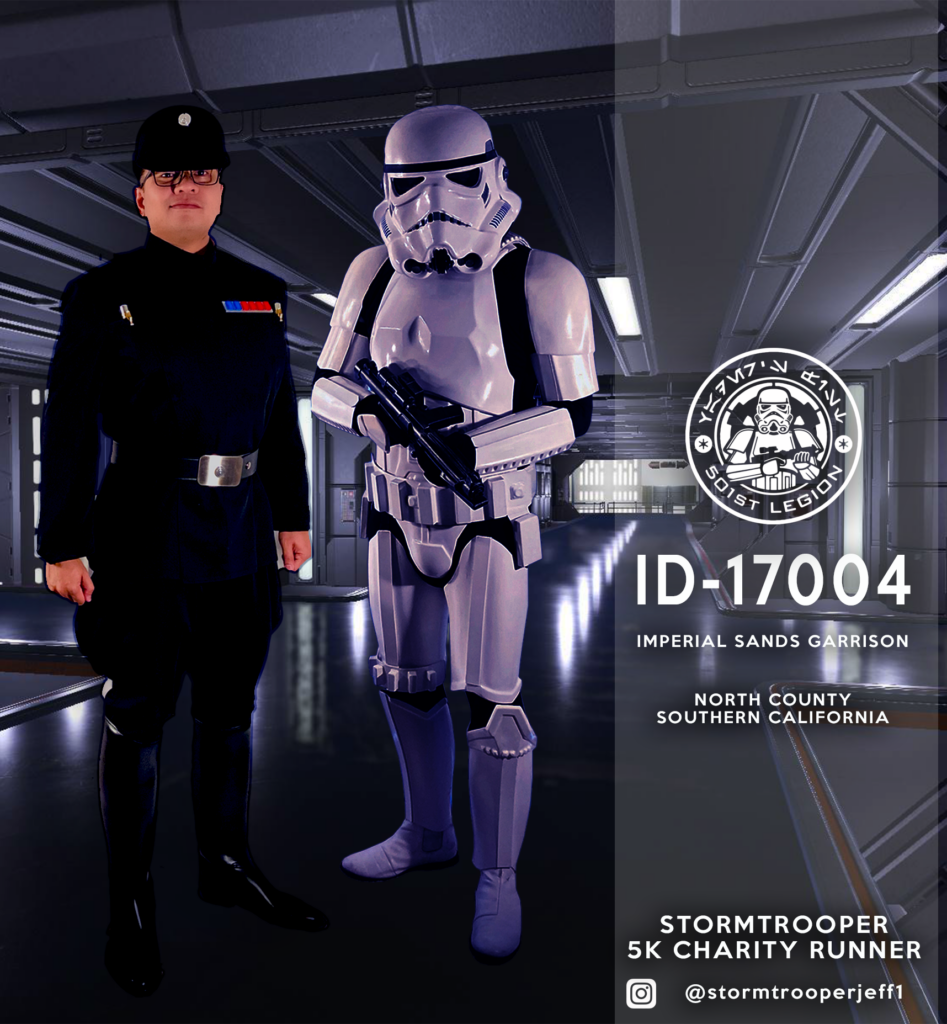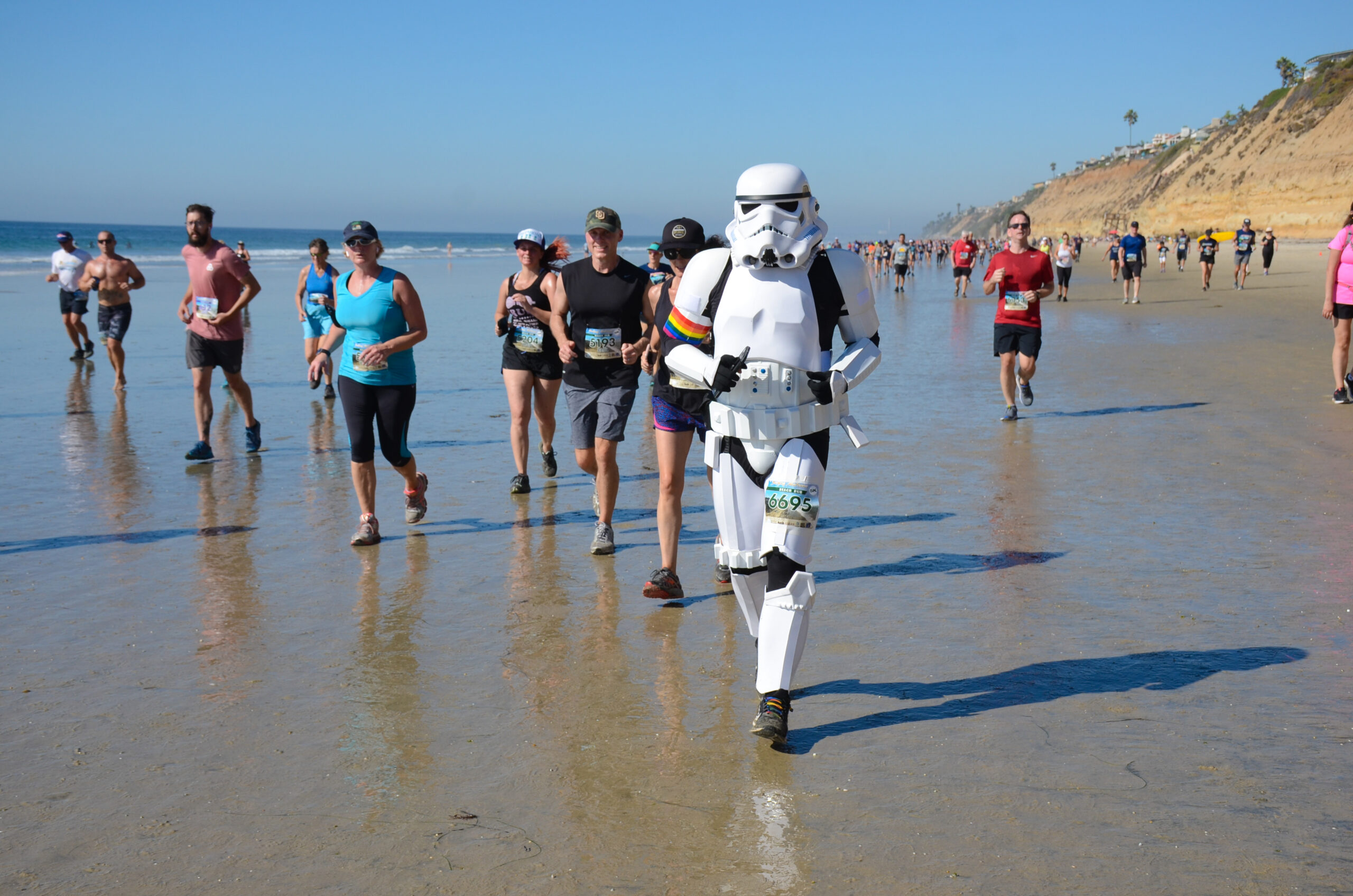This article first appeared in the February 2021 issue of Modern Military Magazine. Read the original article here.
Fundraising: Nobody likes to do it.
Many of us want to do it to help raise money for causes we’re passionate about, but it’s time-consuming and requires coordination. It goes against our better judgement asking people for money. We have to appeal to the altruistic sense of potential donors and find an incentive to convince them to part with their hard-earned money.
For some, fundraising comes easy. They can bank on their bubbly personality, good looks, celebrity status or even their ability to wordsmith (or BS) to tap into their target audience’s emotions — and wallets.
The most experienced and expert fundraisers are those who can draw you in with a combination of those skills. But what if you don’t have those skills, or like me, you absolutely hate the idea of handling money? I knew if I wanted to help raise funds for causes I cared about, I had to find a technique that worked for me.
I realized I had to tap into the idea of the spectacle. Barnum & Bailey, the famous traveling circus, successfully drew in crowds because people are so fascinated by spectacle. The advent of social media allowed everyone in the world to be connected 24/7 in an unprecedented way, making it even easier for us to view and share spectacles. People are inherently eager to observe the ludicrous, and it is this concept I capitalized on to start my own fundraising efforts.
If you also have a drive to fundraise for causes you care about but loathe the idea of asking for money, here are a few strategies I’ve honed to make fundraising successful.
Find Your Niche
Ever since I first laid eyes on the Star Wars story, I was enthralled. Over the decades, that fascination turned into an obsession, which contributed to my decision to join the military immediately after graduating from art school. (Actually, it was more like 60% Star Wars and 40% Star Trek; the lessons of diversity from both strongly contributed to my decision to enlist.) After serving in the military for 14 years, I was able to manifest my obsession into reality: I bought my very first Imperial Stormtrooper armor, and I wore it with giddy anticipation.
I also got connected with other cosplayers and members of the 501st Legion (a group of dedicated Star Wars costumers). It turns out they did a lot of charity work for children and other nonprofits. I learned that a Royal Air Force officer, Squadron Leader Jez Allinson, ran the London Marathon in his Star Wars armor. He raised thousands of pounds for the Make-A-Wish Foundation AND broke the Guinness Book of World Records at the same time. What fascinated me was his ability to draw people in with a spectacle and raise money for important causes in the process. I realized that I could do the same, and I had found my niche.
Build Your Audience
Once you’ve identified your niche, or as I like to call it, your “vehicle” for fundraising, your next task is to build your audience. Where better to start with than your friends and family? It’s fairly easy to do if you already have social media accounts accounts like Facebook, Instagram, and Snapchat, because one post is enough to make people aware of your fundraiser.
Facebook has a premade fundraising tool that’s easy to use. It populates the necessary verbiage and links directly to most nonprofits, allowing donations to go to them directly without you having to collect or disburse funds.
I started my goal at a reasonable level; $200 is usually an attainable goal for beginners. Then, I reel out the hook of the spectacle: “Ever seen a Stormtrooper run a 5k before?”
The idea itself is so ludicrous that it draws in an audience. But manage your expectations when it comes to audience-building, since not everyone will bite at first. It will start small, but over time it will grow. Forgive my analogy, but fundraising is like a virus; it needs a viable host and transmutability in order to survive. The host is your audience. Get them infected early and they’ll spread it.
Display the Spectacle
I use the virus analogy because that’s how information spreads. The very term “viral video” denotes its ability to spread throughout the Internet at an incredibly fast pace. Our society’s dependence (or addiction) to social media lets us push out information immediately.
When a fundraiser is successful, it will infect an audience so they do the work and help spread it for you. The bigger the spectacle, the more effective it will be. Case in point, the Ice Bucket Challenge. Millions of people around the world were drawn in with the ridiculous notion of pouring a bucket of ice over themselves to raise money to find a cure for Lou Gehrig’s Disease (ALS). But was the goal to find a cure, or was it to watch your friends pour a bucket of ice water over themselves? The Cinnamon Challenge is another, albeit superfluous, “challenge” that went viral due to the sheer spectacle.
Spectacle-based fundraisers really can inspire people to donate money for a cause. World War II veteran Captain Sir Tom Moore wanted to raise £1,000 for the United Kingdom’s National Health Service to honor frontline workers tackling the COVID-19 crisis. His vehicle? Since he was about to turn 100 years old and the UK was in lockdown, he pledged to walk the length of his 25-meter garden 100 times. After his fundraiser went viral in the media, he raised over £32 million (that’s over $43 million).

The author Jeff Priela, aka Stormtrooper Jeff
Nurture the Vehicle
The amount of money your raise for your choice of nonprofit is inconsequential. As long as you hit your desired goal, you succeed in your mission. If you raise above that goal, that’s where true fundraising really takes shape. But in order to do that, you need to nurture your vehicle.
You won’t get far if you simply post your fundraiser once and never update or promote it. It takes a surprising amount of work. Once you put it out there in social media land, you need to continually inject a little life into it to get the algorithm working in your favor. Post progress updates, encourage your audience to share it, or even tell a joke to keep the momentum going.
I’ve been doing fundraising runs since 2017. While I started with a modest target of $200, in 2020, I raised nearly $21,500 in total for multiple nonprofits. If I had to calculate the registration fees, the mileage, and the other unaccounted fundraising goals, my total raised since 2017 could easily breach the $30,000 mark.
I managed to get to this level of fundraising because of the continued nurturing and cultivating my audience, and my vehicle (Stormtrooper Jeff). I’ve built and grown my online presence exponentially by posting hashtags, photos, links, articles, and encouraging others to share. Not everyone can or wants to create an entire personality, and while it can help, it’s not required. Simply keeping your efforts visible on a regular basis will make sure people don’t forget about it.
Deliver Results
If you say you’re doing a 5k and raising $200, you better finish that 5k and prove that you hit your goal. It’s ideal to hit both of those goals, because it gives your audience a sense of accomplishment and they’ll live through your efforts vicariously.
I can’t tell you how many times people have asked me, “How can you run in that thing?” or said, “It must be really hot to run as a Stormtrooper!” or “Better you than me!” It can be hard work putting on the spectacle, but your donors track your progress and want to share in your accomplishment.
Victory builds upon victory, and for each successful event you do, it increases your chances of gaining future donors. However, you do need proof of victory for credibility. Selfies, photo opportunities, video, and news reports will bring you that gravitas.
Captain Sir Tom Moore is indicative of how impactful one person’s efforts can be. His charming story of altruism and wanting to do his bit for his country inspired a nation in the grip of a global pandemic. He was so successful in his efforts that honors were poured on him by every facet of British life, culminating in a knighthood from Queen Elizabeth.
Rinse, Cycle and Repeat….With Modifications
Once you identify a successful fundraising method, you can repeat it as many times as you want, but know that people tend to get bored unless you alter its DNA in some way. You need to inject something new into the spectacle or it becomes repetitive and boring, and you’ll see a marked decrease in audience participation and donations. You have to reinvent your spectacle every so often, or you can pause in-between fundraising events.
In my case, I space out fundraisers over a couple of months. I also diversify the nonprofits I raise money for and coordinate a fundraising event with a specific holiday or significant event.
It can also be extremely helpful to gauge the national mood. For example, in 2020, the Black Lives Matter movement gained momentum. Protest after protest about police brutality filled the streets around the country in response to the murder of George Floyd. Instinctively, I quickly put together a 10-mile fundraising run for the NAACP Legal Defense Fund. This is what I like to call “Lightning Rod Fundraising.”
When there is a seminal event that grips the country, it’s wise to align your efforts with what the national mood is calling for. In this case, it meant raising money for causes that benefit the Black Lives Matter movement. Another example: upon the death of Justice Ruth Bader Ginsburg, it was relevant to raise money for the Modern Military Association of America since they provide pro bono legal services to LGBTQ+ military personnel and their families.
Another way I inject new life into my fundraising efforts is to increase the distance I run, Instead of doing a 5K in armor, why not do a 10K? If you’re done with a 10K, try a half-marathon. Eventually, with training and practice, you’ll build up to a bigger spectacle, and your goal should correspond accordingly with your spectacle.
With each success, your fundraising goal should also increase. If you were raising $200 for a 5k, boost it up to $500 for a 10K. If you manage to hit your fundraising target before your big event is concluded, there’s nothing wrong with increasing your fundraising goal. Your goal should correspond accordingly to your spectacle.
Give Something Away
People love free stuff; it’s shocking how much they’ll do for a free T-shirt or raffle entry, and you can use this to your advantage. Offering some sort of incentive can increase your donor base.
In my case, I invested my own capital in developing my Stormtrooper Jeff brand. I created a coin and a badge, which I gave away in my first ever raffle. I got this idea from the 501st Legion, where members offered up custom, fan-made Star Wars items and donated to a raffle.
However, you don’t need to give away a freebie to every donor; you can use your swag as a raffle prize that one donor (or more) can win. When I offered some sets of my coins and badges in a prize raffle for my fundraiser, it drew a significant increase in donors and made the entrants feel like they were more actively participating in the fundraiser.
What’s Your Spectacle?
Is it ridiculous to run for miles as a Stormtrooper? Yes, very much so. But people are inspired by a grown individual clunking around in a real-world, life-size phenomena that they’ve only ever seen in the movies.
While I could potentially use my spectacle to make money for myself, that is not my modus operandi. I wanted to be helpful by marrying my interests with active participation in causes I care about. Running as a Stormtrooper does it for me. It keeps me healthy, it adds a certain bit of notoriety, and it makes people smile. But more importantly, it has made me more engaged in my community in more ways than I ever imagined. If you’re not a fan of asking friends and family for money, but you want to make an impact in the world, I suggest you ask yourself: What’s your spectacle?
HM1(FMF/SW) Jeff Priela currently serves with the Marines onboard Marine Corps Base Camp Pendleton. He has been in the Navy for 15 years. He has served with OutServe-SLDN as board treasurer and graphic designer. He also cosplays as part of the Star Wars Costuming community, the 501st Legion.


